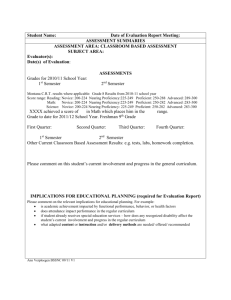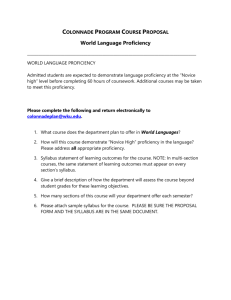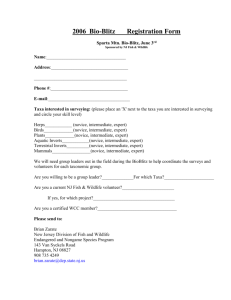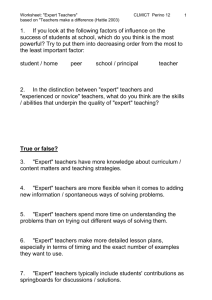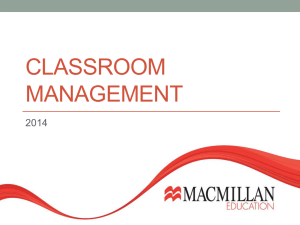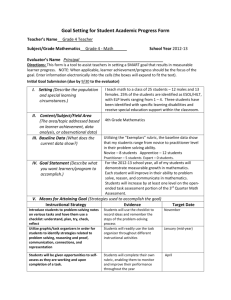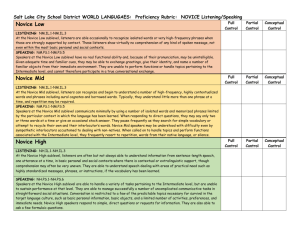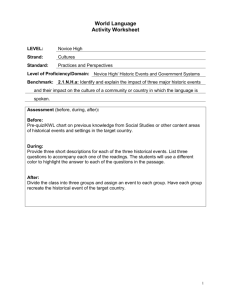Comparisons
advertisement
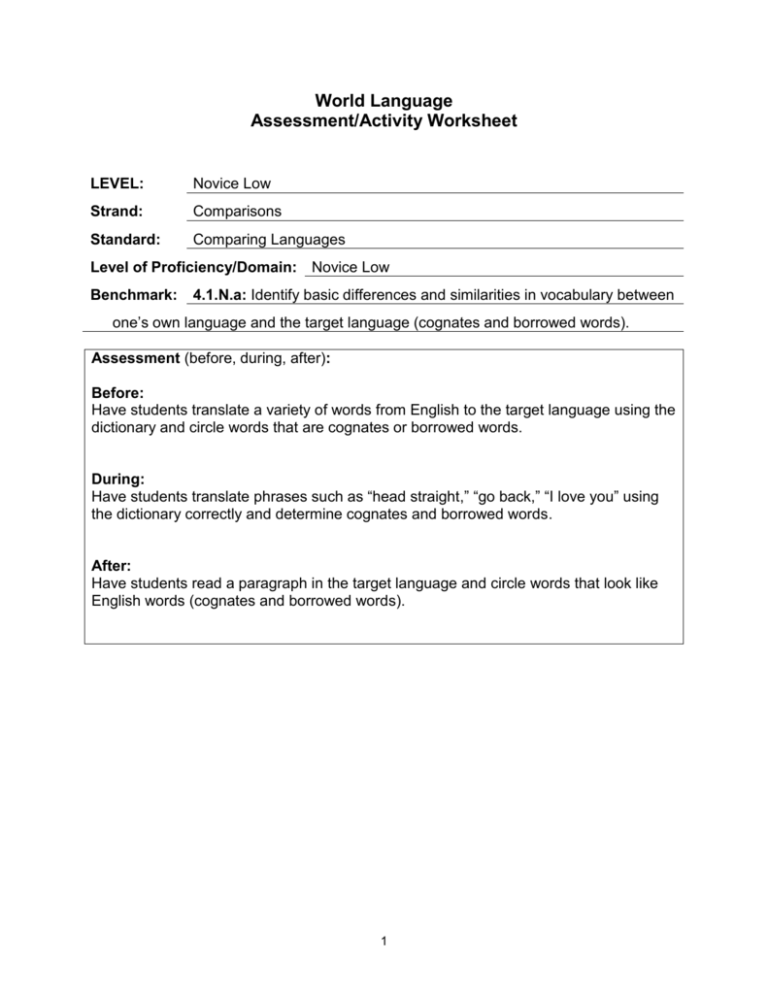
World Language Assessment/Activity Worksheet LEVEL: Novice Low Strand: Comparisons Standard: Comparing Languages Level of Proficiency/Domain: Novice Low Benchmark: 4.1.N.a: Identify basic differences and similarities in vocabulary between one’s own language and the target language (cognates and borrowed words). Assessment (before, during, after): Before: Have students translate a variety of words from English to the target language using the dictionary and circle words that are cognates or borrowed words. During: Have students translate phrases such as “head straight,” “go back,” “I love you” using the dictionary correctly and determine cognates and borrowed words. After: Have students read a paragraph in the target language and circle words that look like English words (cognates and borrowed words). 1 Learning Activities/Facts/Information: Resources: New Vocabulary: 2 World Language Assessment/Activity Worksheet LEVEL: Novice Low Strand: Comparisons Standard: Comparing Languages Level of Proficiency/Domain: Novice Low Benchmark: 4.1.N.b: Identify basic differences and similarities in grammatical structures between one’s own language and the target. Assessment (before, during, after): Before: Have students translate a variety of phrases from English to the target language using the dictionary (i.e. “It is fun,” “I have it,” “I like basketball,” “I love you,” “red shirt,” “give me that,” “My name is,” “I’m 8 years old”) (*using phrases that have different structures in English than in target language). During: Have students translate additional phrases from the before assessment such as “I have it,” “My brother is 9 years old,” “I like cars,” etc. using the dictionary correctly. After: Have students read a whole paragraph in the native language and circle grammatical differences. 3 Learning Activities/Facts/Information: Resources: New Vocabulary: 4 World Language Assessment/Activity Worksheet LEVEL: Novice Low Strand: Comparisons Standard: Comparing Languages Level of Proficiency/Domain: Novice Low Benchmark: 4.1.N.c: Identify basic differences and similarities in register/honorifics between one’s own language and the target language. Assessment (before, during, after): Before: Show students pictures of different people and ask them which register they would use when talking to that person (formal or informal). During: Have students translate parts of a conversation into the target language to show understanding of not just being able to translate “you” directly; there are different ways to say “you” and each way changes the meaning. After: Have students write really short messages to three different people (friend, teacher & a group of people), saying the same thing in all three messages but changing the register appropriately and using appropriate honorifics if necessary. 5 Learning Activities/Facts/Information: Resources: New Vocabulary: 6 World Language Assessment/Activity Worksheet LEVEL: Novice Low Strand: Comparisons Standard: Comparing Languages Level of Proficiency/Domain: Novice Low Benchmark: 4.1.N.d: Identify basic differences and similarities in phonological features (such as pronunciation, intonation, and tone) between one’s own language and the target language. Assessment (before, during, after): Before: Give each student 5 different words in the target language; choosing words that are commonly mispronounced due to the way the sounds the letters make in English (examples in Spanish: the –ge, lla, -gi, vowels, examples in French: vowels, “ll”). During: Students are given a short script and have to read/act out script with a partner in front of the class focusing on pronunciation. After: Students have to individually give a brief presentation on a news article where they read the article aloud to the class, focusing on pronunciation, and explain what it is about in English after reading the article. 7 Learning Activities/Facts/Information: Resources: 1. Go over the five words as a class and discuss the pronunciation of the word letter by letter and have students repeat after teacher. News broadcasts from Internet sites 2. Review the alphabet in the target language and point out major differences between that and English. 3. With each new vocabulary word that is taught throughout the year, the students need to repeat it to the teacher to get the pronunciation down. 4. Listen to a news broadcast in the target language and pay attention to pronunciation. New Vocabulary: pronunciation, letters of the alphabet 8 World Language Assessment/Activity Worksheet LEVEL: Novice Low Strand: Comparisons Standard: Comparing Cultures Level of Proficiency/Domain: Novice Low Benchmark: 4.2.N.a: Identify the basic target language culture practices and compare them to one’s own. Assessment (before, during, after): Before: KWL chart – What do you know about ____________________ practice from the target culture. (Could be a religious practice such as Easter or Christmas or Ramadan, or a coming of age custom, wedding practices, schooling, food, etc.) During: Students have to create a Venn diagram comparing their culture to the culture seen in a movie shown (can be a documentary or a regular movie and can be a specific custom or can be more general comparing the culture overall). After: 3-fold poster board project; on left side the tradition/custom from your culture, the right side would have the tradition/custom from the target culture and in the middle would be what they have in common (for example: comparing sweet sixteen and quinceanera). Each student is assigned a different tradition/custom. 9 Learning Activities/Facts/Information: Resources: New Vocabulary: 10 World Language Assessment/Activity Worksheet LEVEL: Novice Low Strand: Comparisons Standard: Comparing Cultures Level of Proficiency/Domain: Novice Low Benchmark: 4.2.N.b: Identify basic target culture products and compare them to one’s own . Assessment (before, during, after): Before: Students are given brief descriptions of products and then a picture of the products and then have to match them. During: Students are given different ads for products in the target language and have to answer a variety of questions about them. After: In pairs students give an oral presentation on a product from the target culture. Each pair is assigned a different cultural product (a clothing item, a food, a car, etc.). 11 Learning Activities/Facts/Information: Resources: New Vocabulary: 12
